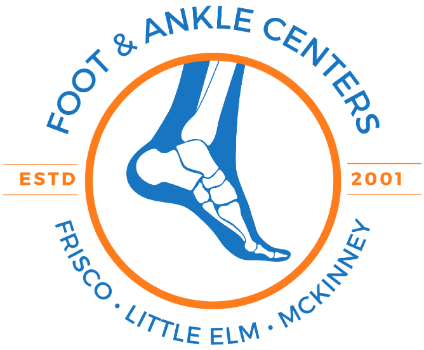Overcome Your Bunion Pain with Podiatry Treatments
Bunions affect more than 35% of adults over 65 and almost a quarter of all younger adults, as well. A bunion is evidence of a joint deviation, which means it requires professional care. At Foot & Ankle Centers of Frisco, Little Elm, & McKinney, our skilled podiatrists treat bunions with conservative and surgical care based on your symptoms. Call today to schedule your appointment at one of our offices with Dr. Tavakoli or Dr. Knapp.


Discover the Signs of a Developing Bunion
Discovering the signs of a developing bunion is important, as early detection and treatment can help to reduce the pain and discomfort associated with bunions. Some common signs of a bunion include swelling and redness at the base of the big toe, a painful bump on the side of the foot, and difficulty walking or standing for long periods of time.
Most often, this complex foot deformity typically develops in three ways:
Leaning
Abnormal foot structure and poor foot mechanics overload your first metatarsal bone, which is just below your MTP joint. This overload stretches and weakens your ligaments and joint capsule (the layers covering your joint) to cause the first metatarsal bone to lean sideways.
Elevation
The sideways lean causes the bunion bump to grow prominent. In turn, this often causes your first metatarsal bone and MTP joint to elevate and transfer the load to the rest of your foot. This can cause serious pain in the ball of your foot and walking problems.
Rotation
As your bunion progresses, you also have abnormal tendon strain that pushes your big toe farther out of position.
These three factors are often present at the same time, which is why bunions require specialized treatment to prevent further damage to the foot. If you are experiencing any of these symptoms, it is important to schedule your appointment at Foot & Ankle Centers to have your bunion examined and start a treatment plan. Early detection and treatment of bunions can help to reduce pain and improve mobility.



Foot and Ankle Centers of Frisco, Little Elm, & McKinney offer world-class innovative solutions for bunion deformity correction. Dr. Tavakoli has performed more Lapiplasty surgeries than any female surgeon in the USA, having safely performed hundreds of these cases.
If you are a patient who is suffering from bunion pain, please contact us for a bunion consultation. One of our caring and highly experienced podiatrists will take X-rays, perform a comprehensive examination and provide an analysis of this complex deformity. Your treatment plan will be determined by the severity of your bunion and there is no obligation to have surgery. If surgery is recommended, your surgeon will draw the procedure on your x-rays showing you how the procedure will be done, what results you may expect, what risks you may encounter, and details about the recovery process.
With the right treatment plan, you should be able to get back to comfortable, pain-free walking in no time. Contact our office today for your personalized consultation.
